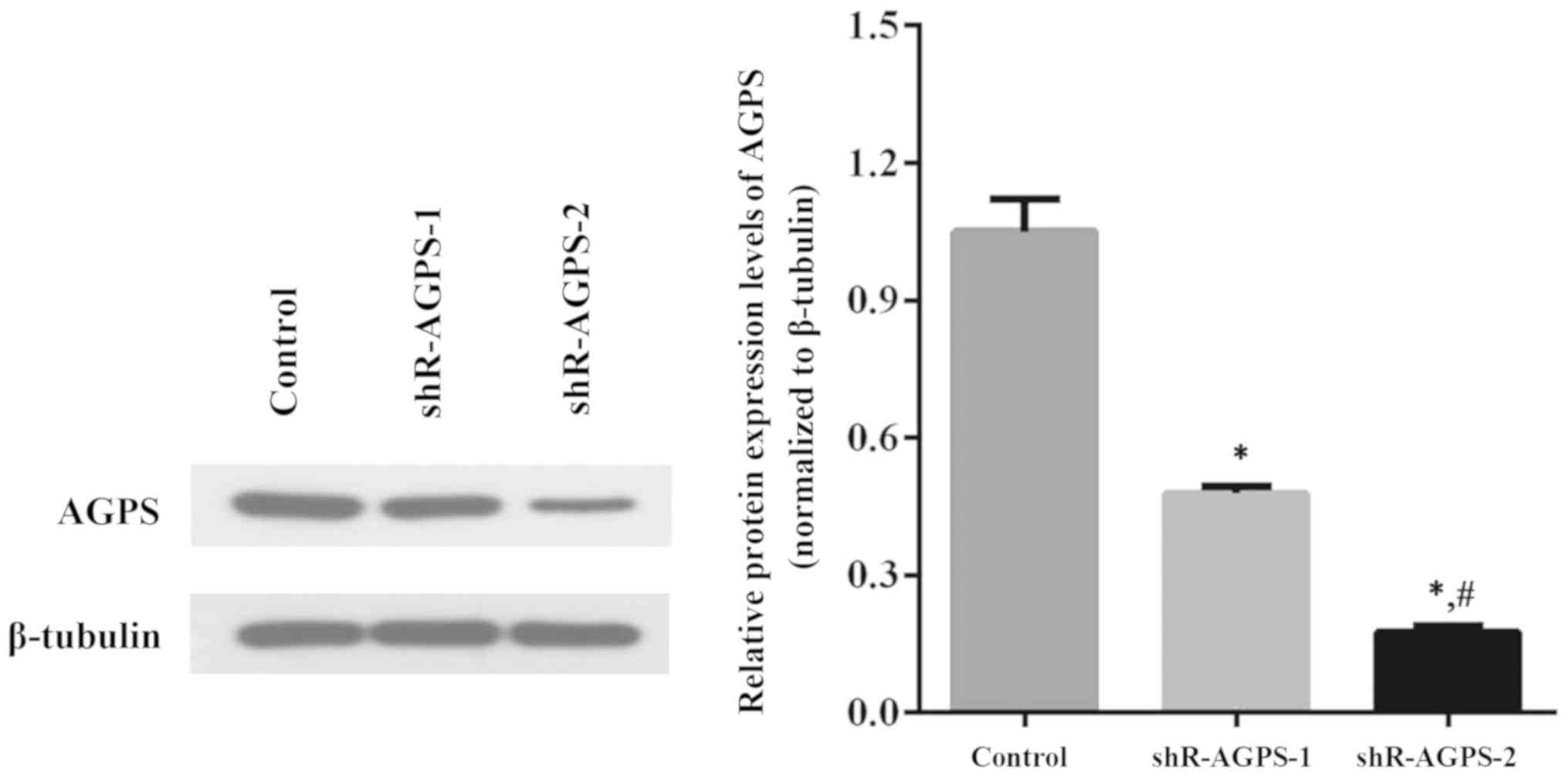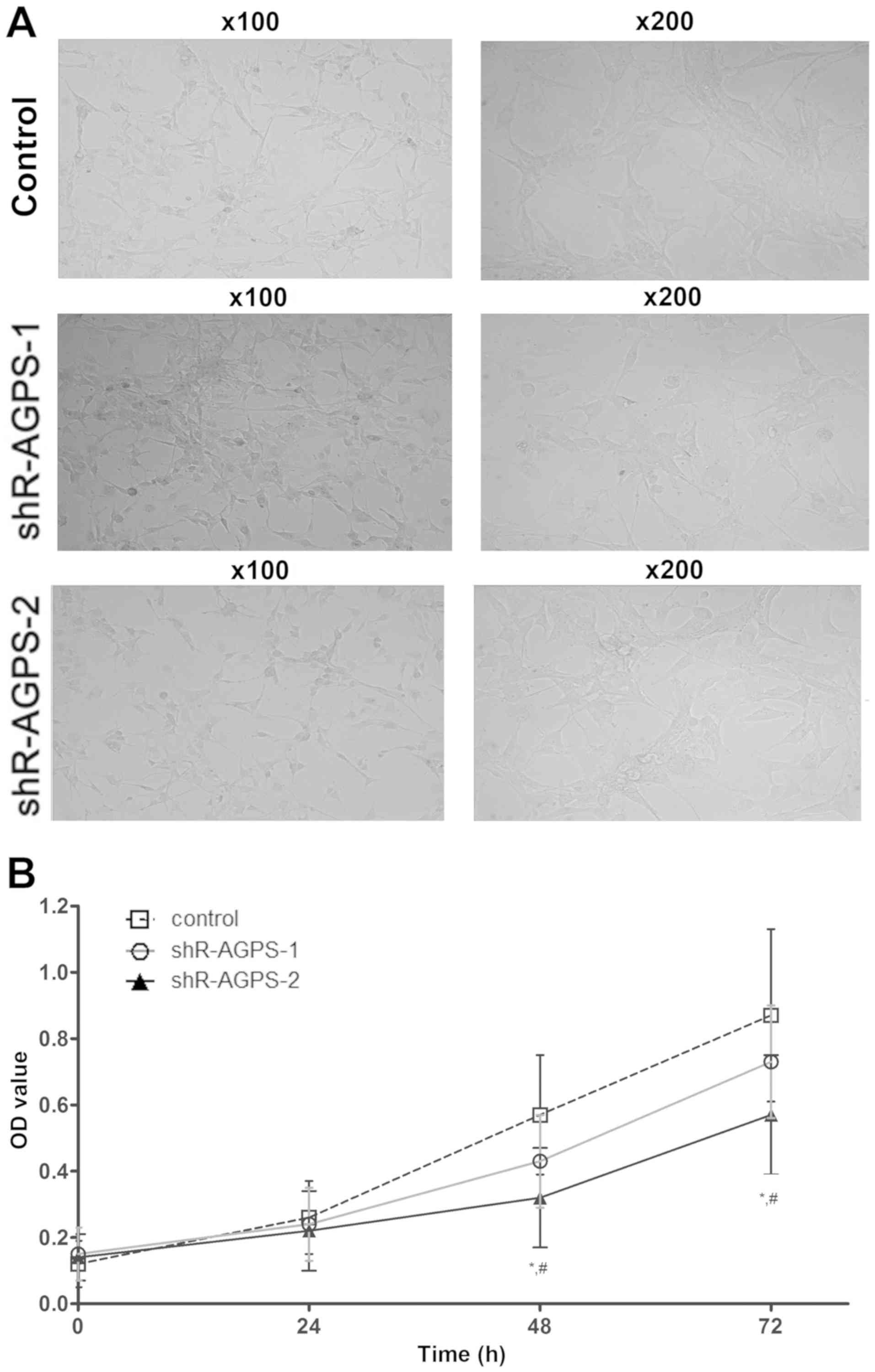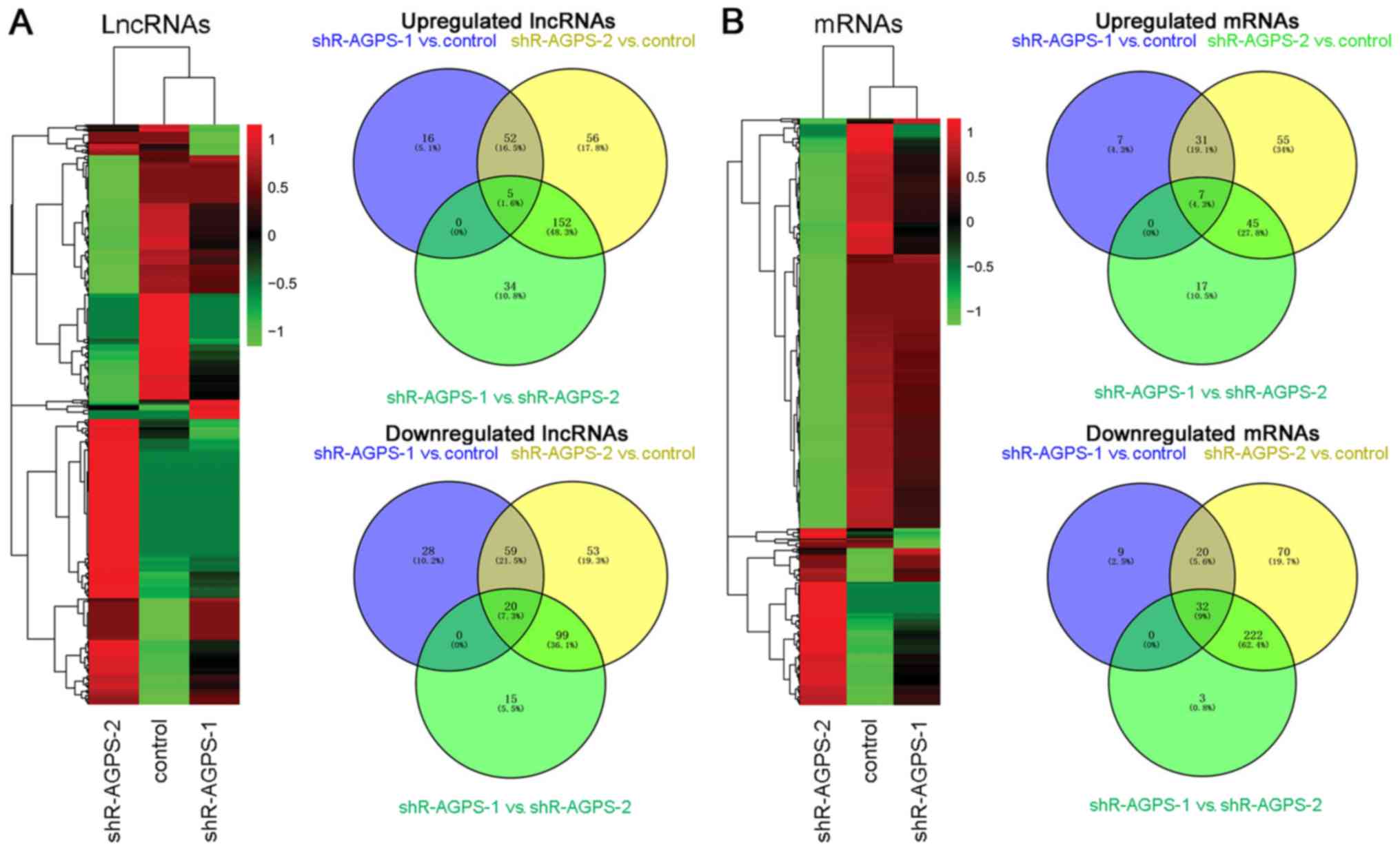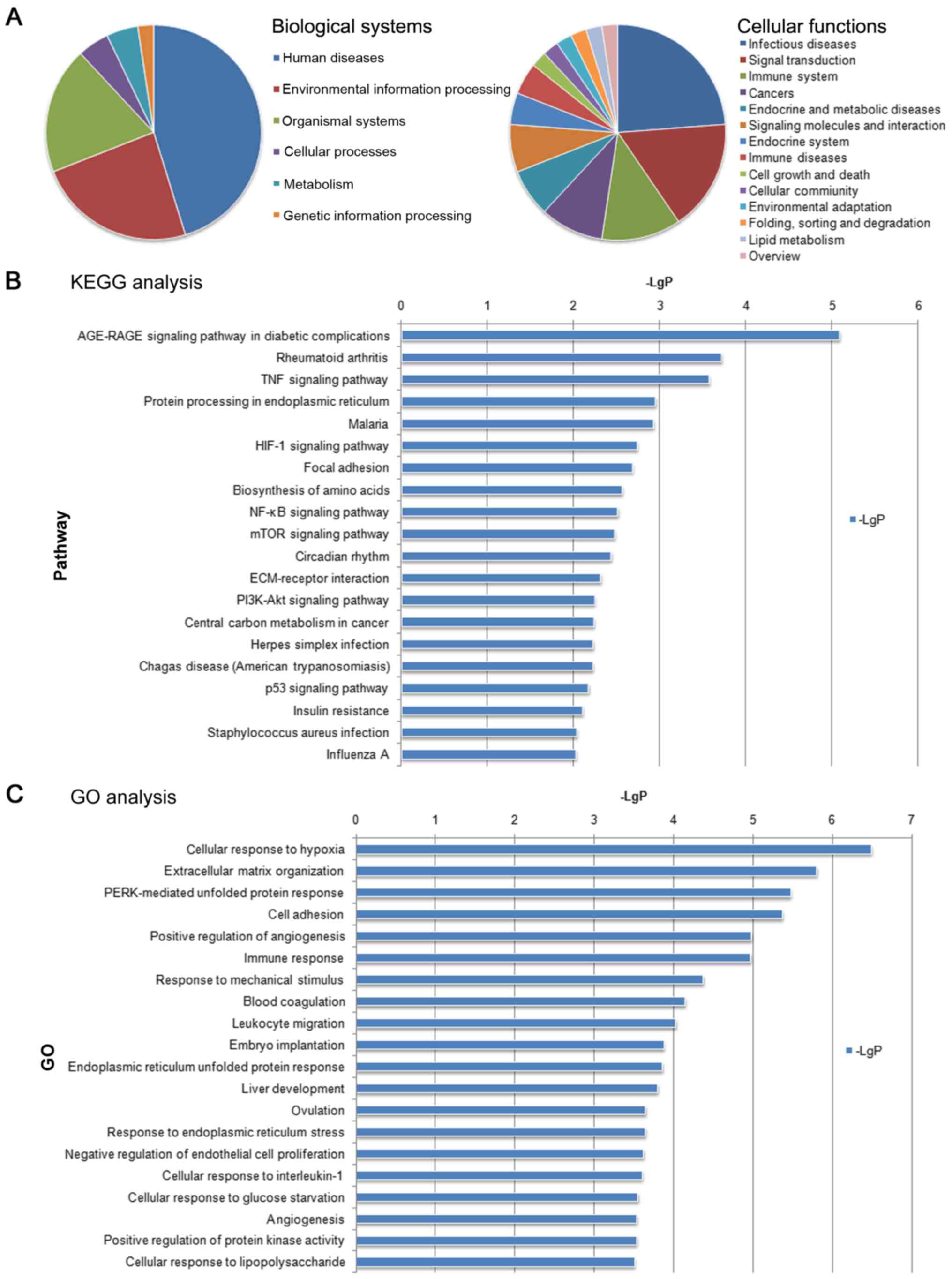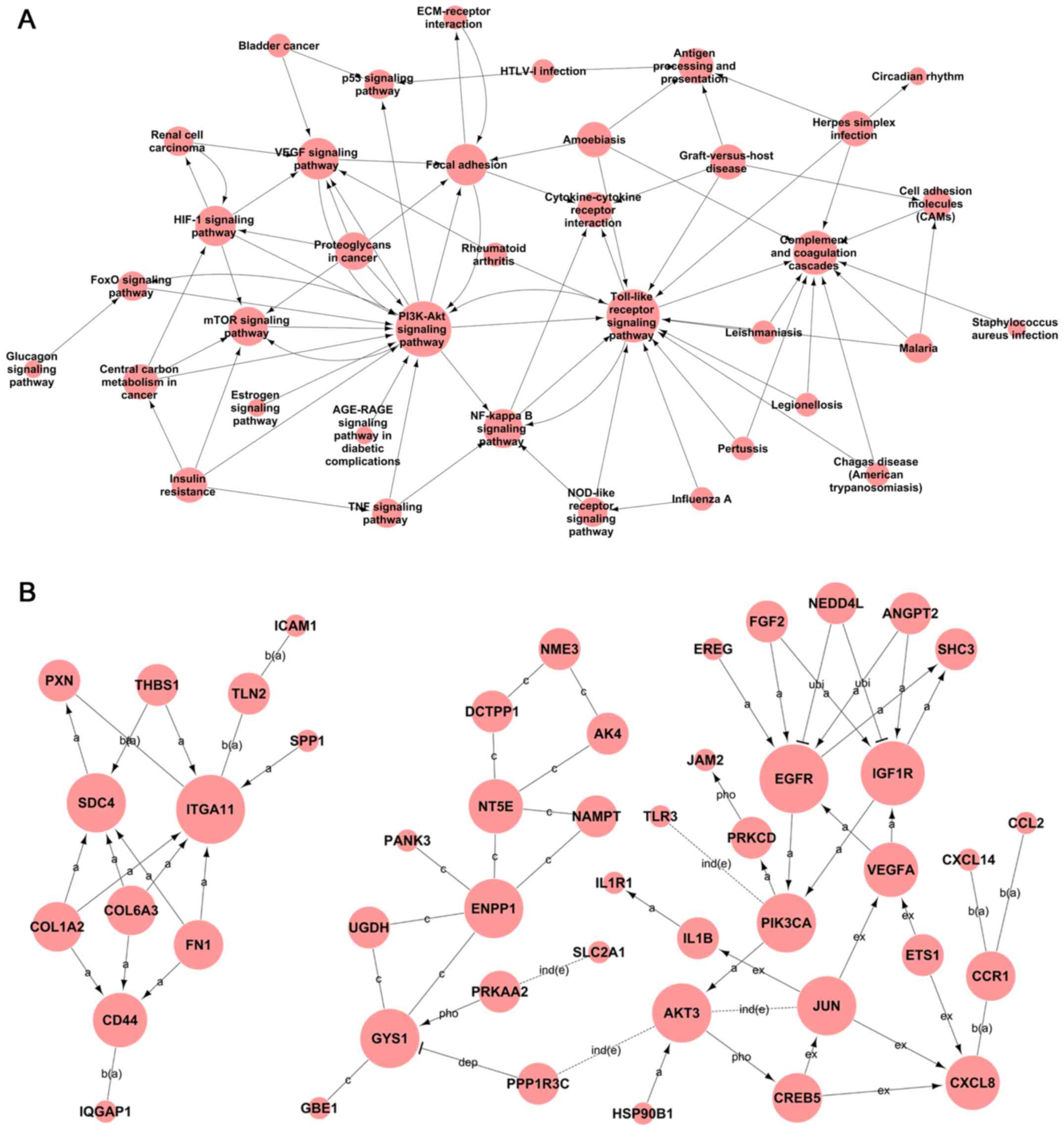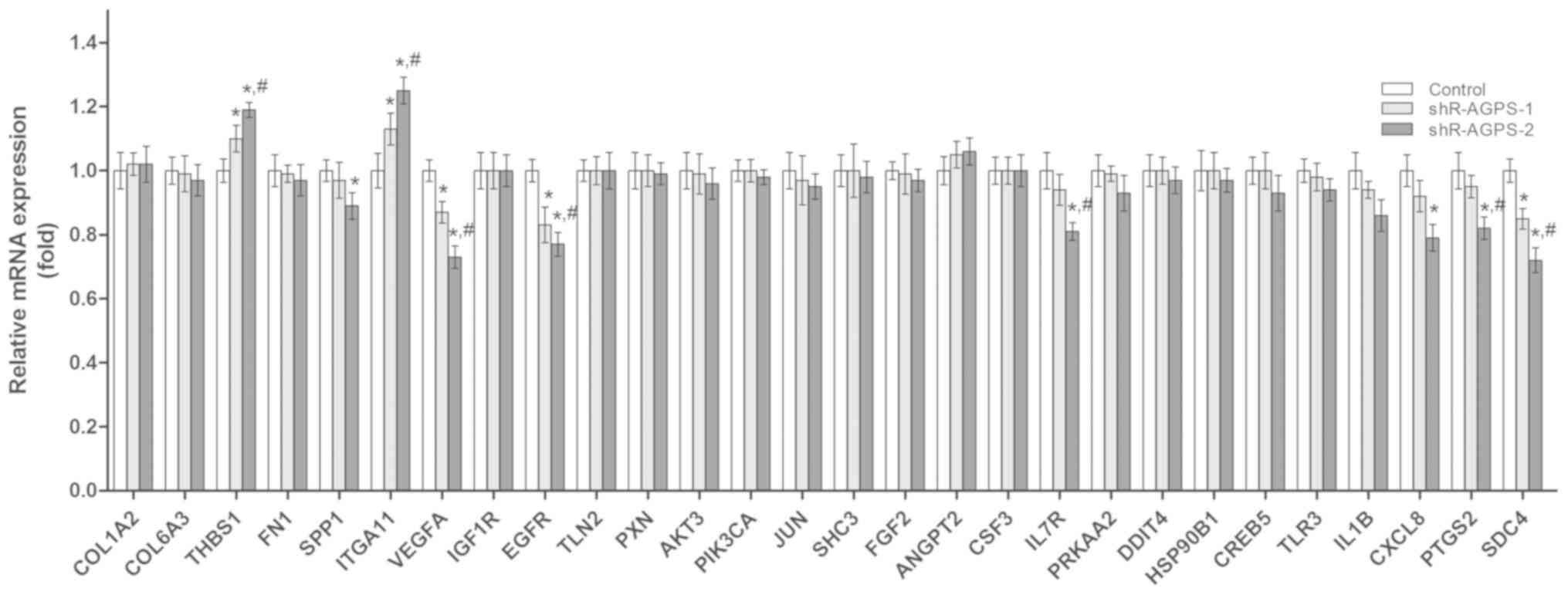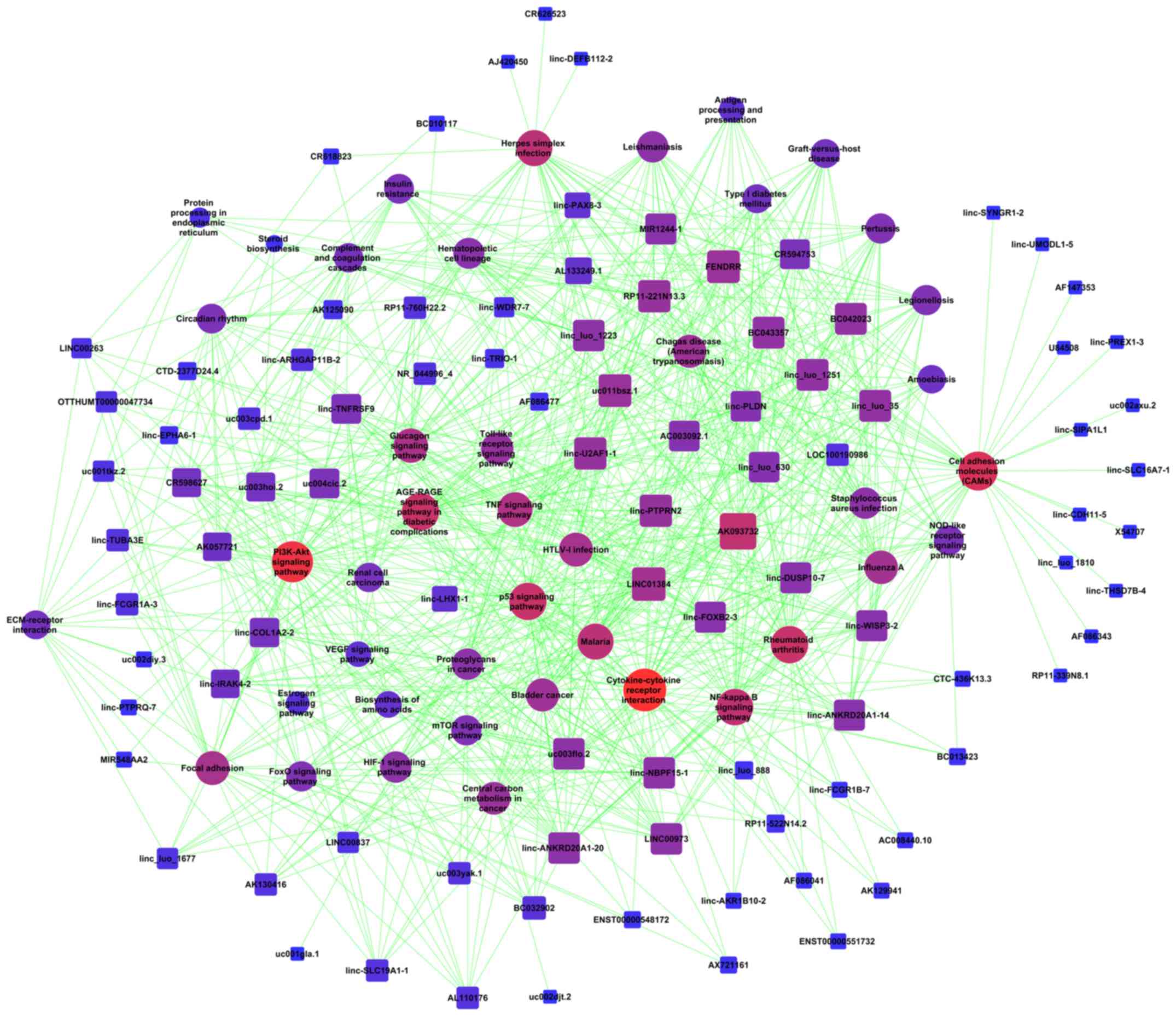|
1
|
Ferris SP, Hofmann JW, Solomon DA and
Perry A: Characterization of gliomas: From morphology to molecules.
Virchows Arch. 2:257–269. 2017. View Article : Google Scholar
|
|
2
|
Benjamin Daniel I, Cravatt Benjamin F and
Nomura Daniel K: Global profiling strategies for mapping
dysregulated metabolic pathways in cancer. Cell Metab. 5:565–577.
2012. View Article : Google Scholar
|
|
3
|
Piano V, Benjamin DI, Valente S, Nenci S,
Marrocco B, Mai A, Aliverti A, Nomura DK and Mattevi A: Discovery
of inhibitors for the ether lipid-generating enzyme AGPS as
anti-cancer agents. ACS Chem Biol. 11:2589–2597. 2015. View Article : Google Scholar
|
|
4
|
Benjamin DI, Cozzo A, Ji X, Roberts LS,
Louie SM, Mulvihill MM, Luo K and Nomura DK: Ether lipid generating
enzyme AGPS alters the balance of structural and signaling lipids
to fuel cancer pathogenicity. Proc Natl Acad Sci USA.
110:14912–14917. 2013. View Article : Google Scholar : PubMed/NCBI
|
|
5
|
Hou S, Tan J, Yang B, He L and Zhu Y:
Effect of alkylglycerone phosphate synthase on the expression
profile of circRNAs in the human thyroid cancer cell line FRO.
Oncol Lett. 15:7889–7899. 2018.PubMed/NCBI
|
|
6
|
Stazi G, Battistelli C, Piano V, Mazzone
R, Marrocco B, Marchese S, Louie SM, Zwergel C, Antonini L,
Patsilinakos A, et al: Development of alkyl glycerone phosphate
synthase inhibitors: Structure-activity relationship and effects on
ether lipids and epithelial-mesenchymal transition in cancer cells.
Eur J Med Chem. 163:722–735. 2019. View Article : Google Scholar : PubMed/NCBI
|
|
7
|
Zhu Y, Zhu L, Lu L, Zhang L, Zhang G, Wang
Q and Yang P: Role and mechanism of the alkylglycerone phosphate
synthase in suppressing the invasion potential of human glioma and
hepatic carcinoma cells in vitro. Oncol Rep. 32:431–436.
2014. View Article : Google Scholar : PubMed/NCBI
|
|
8
|
Jarroux J, Morillon A and Pinskaya M:
History, discovery, and classification of lncRNAs. Adv Exp Med
Biol. 1008:1–46. 2017. View Article : Google Scholar : PubMed/NCBI
|
|
9
|
Jiang X, Yan Y, Hu M, Chen X, Wang Y, Dai
Y, Wu D, Wang Y, Zhuang Z and Xia H: Increased level of H19 long
noncoding RNA promotes invasion, angiogenesis, and stemness of
glioblastoma cells. J Neurosurg. 2016:129–136. 2016. View Article : Google Scholar : PubMed/NCBI
|
|
10
|
Lim W and Kim HS: Exosomes as therapeutic
vehicles for cancer. Tissue Eng Regen Med. 16:213–223. 2019.
View Article : Google Scholar : PubMed/NCBI
|
|
11
|
Livak KJ and Schmittgen TD: Analysis of
relative gene expression data using real-time quantitative PCR and
the 2(-Delta Delta C(T)) method. Methods. 25:402–408. 2001.
View Article : Google Scholar : PubMed/NCBI
|
|
12
|
Noman MZ, Hasmim M, Messai Y, Terry S,
Kieda C, Janji B and Chouaib S: Hypoxia: A key player in antitumor
immune response. A review in the theme: Cellular responses to
hypoxia. Am J Physiol Cell Physiol. 309:C569–C579. 2015. View Article : Google Scholar : PubMed/NCBI
|
|
13
|
Pickup MW, Mouw JK and Weaver VM: The
extracellular matrix modulates the hallmarks of cancer. EMBO Rep.
15:1243–1253. 2014. View Article : Google Scholar : PubMed/NCBI
|
|
14
|
Soni H, Bode J, Nguyen CDL, Puccio L,
Neßling M, Piro RM, Bub J, Phillips E, Ahrends R, Eipper BA, et al:
PERK-mediated expression of peptidylglycine α-amidating
monooxygenase supports angiogenesis in glioblastoma. Oncogenesis.
9:182020. View Article : Google Scholar : PubMed/NCBI
|
|
15
|
Wood R and Snyder F: Characterization and
identification of glyceryl ether diesters present in tumor cells. J
Lipid Res. 8:494–500. 1967.PubMed/NCBI
|
|
16
|
Jaffrès PA, Gajate C, Bouchet AM,
Couthon-Gourvès H, Chantôme A, Potier-Cartereau M, Besson P,
Bougnoux P, Mollinedo F and Vandier C: Alkyl ether lipids, ion
channels and lipid raft reorganization in cancer therapy. Pharmacol
Ther. 165:114–131. 2016. View Article : Google Scholar : PubMed/NCBI
|
|
17
|
Li Y, Han X, Feng H and Han J: Long
noncoding RNA OIP5-AS1 in cancer. Clin Chim Acta. 499:75–80. 2019.
View Article : Google Scholar : PubMed/NCBI
|
|
18
|
Shen J, Cao B, Wang Y, Ma C, Zeng Z, Liu
L, Li X, Tao D, Gong J and Xie D: Hippo component YAP promotes
focal adhesion and tumour aggressiveness via transcriptionally
activating THBS1/FAK signalling in breast cancer. J Exp Clin Cancer
Res. 37:1752018. View Article : Google Scholar : PubMed/NCBI
|
|
19
|
Wu P, Wang Y, Wu Y, Jia Z, Song Y and
Liang N: Expression and prognostic analyses of ITGA11, ITGB4 and
ITGB8 in human non-small cell lung cancer. PeerJ. 7:e82992019.
View Article : Google Scholar : PubMed/NCBI
|
|
20
|
Jeong BY, Cho KH, Jeong KJ, Park YY, Kim
JM, Rha SY, Park CG, Mills GB, Cheong JH and Lee HY: Rab25 augments
cancer cell invasiveness through a β1 integrin/EGFR/VEGF-A/Snail
signaling axis and expression of fascin. Exp Mol Med. 50:e4352018.
View Article : Google Scholar : PubMed/NCBI
|
|
21
|
Zeng B, Zhou M, Wu H and Xiong Z: SPP1
promotes ovarian cancer progression via Integrin β1/FAK/AKT
signaling pathway. Onco Targets Ther. 11:1333–1343. 2018.
View Article : Google Scholar : PubMed/NCBI
|
|
22
|
Rhead B, Shao X, Quach H, Ghai P,
Barcellos LF and Bowcock AM: Global expression and CpG methylation
analysis of primary endothelial cells before and after TNFa
stimulation reveals gene modules enriched in inflammatory and
infectious diseases and associated DMRs. PLoS One. 15:e02308842020.
View Article : Google Scholar : PubMed/NCBI
|
|
23
|
Ni M, Liu X, Meng Z, Liu S, Jia S, Liu Y,
Zhou W, Wu J, Zhang J, Guo S, et al: A bioinformatics investigation
into the pharmacological mechanisms of javanica oil emulsion
injection in non-small cell lung cancer based on network
pharmacology methodologies. BMC Complement Med Ther. 20:1742020.
View Article : Google Scholar : PubMed/NCBI
|
|
24
|
Long Y, Wang X, Youmans DT and Cech TR:
How do lncRNAs regulate transcription? Sci Adv. 3:eaao21102017.
View Article : Google Scholar : PubMed/NCBI
|
|
25
|
Abedini P, Fattahi A, Agah S, Talebi A,
Beygi AH, Amini SM, Mirzaei A and Akbari A: Expression analysis of
circulating plasma long noncoding RNAs in colorectal cancer: The
relevance of lncRNAs ATB and CCAT1 as potential clinical hallmarks.
J Cell Physiol. 234:22028–22033. 2019. View Article : Google Scholar : PubMed/NCBI
|
|
26
|
Liang WC, Ren JL, Wong CW, Chan SO, Waye
MM, Fu WM and Zhang JF: LncRNA-NEF antagonized epithelial to
mesenchymal transition and cancer metastasis via cis-regulating
FOXA2 and inactivating Wnt/β-catenin signaling. Oncogene.
37:1445–1456. 2018. View Article : Google Scholar : PubMed/NCBI
|
|
27
|
Wang B, Xian J, Zang J, Xiao L, Li Y, Sha
M and Shen M: Long non-coding RNA FENDRR inhibits proliferation and
invasion of hepatocellular carcinoma by down-regulating glypican-3
expression. Biochem Biophys Res Commun. 509:143–147. 2019.
View Article : Google Scholar : PubMed/NCBI
|
|
28
|
Zhang G, Han G, Zhang X, Yu Q, Li Z, Li Z
and Li J: Long non-coding RNA FENDRR reduces prostate cancer
malignancy by competitively binding miR-18a-5p with RUNX1.
Biomarkers. 23:435–445. 2018. View Article : Google Scholar : PubMed/NCBI
|
|
29
|
Liu J and Du W: LncRNA FENDRR attenuates
colon cancer progression by repression of SOX4 protein. Onco
Targets Ther 12: 4287-4295, 2019; Li Y, Zhang W, Liu P, Xu Y, Tang
L, Chen W and Guan X: Long non-coding RNA FENDRR inhibits cell
proliferation and is associated with good prognosis in breast
cancer. Onco Targets Ther. 11:1403–1412. 2018.PubMed/NCBI
|
|
30
|
Xu R and Han Y: Long non-coding RNA FOXF1
adjacent non-coding developmental regulatory RNA inhibits growth
and chemotherapy resistance in non-small cell lung cancer. Arch Med
Sci. 15:1539–1546. 2019. View Article : Google Scholar : PubMed/NCBI
|
|
31
|
Gong F, Dong D, Zhang T and Xu W: Long
non-coding RNA FENDRR attenuates the stemness of non-small cell
lung cancer cells via decreasing multidrug resistance gene 1 (MDR1)
expression through competitively binding with RNA binding protein
HuR. Eur J Pharmacol. 853:345–352. 2019. View Article : Google Scholar : PubMed/NCBI
|
|
32
|
Navarro G, Martínez-Pinilla E,
Sánchez-Melgar A, Ortiz R, Noé V, Martín M, Ciudad C and Franco R:
A genomics approach identifies selective effects of
trans-resveratrol in cerebral cortex neuron and glia gene
expression. PLoS One. 12:e01760672017. View Article : Google Scholar : PubMed/NCBI
|
|
33
|
Lee EJ, Rath P, Liu J, Ryu D, Pei L,
Noonepalle SK, Shull AY, Feng Q, Litofsky NS, Miller DC, et al:
Identification of global DNA methylation signatures in
glioblastoma-derived cancer stem cells. J Genet Genomics.
42:355–371. 2015. View Article : Google Scholar : PubMed/NCBI
|
|
34
|
Shen Z, Li Q, Deng H, Lu D, Song H and Guo
J: Long non-coding RNA profiling in laryngeal squamous cell
carcinoma and its clinical significance: Potential biomarkers for
LSCC. PLoS One. 9:e1082372014. View Article : Google Scholar : PubMed/NCBI
|















